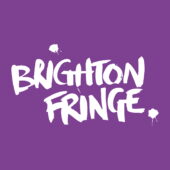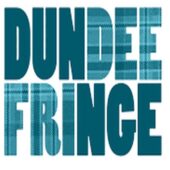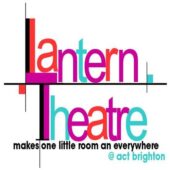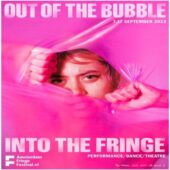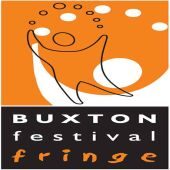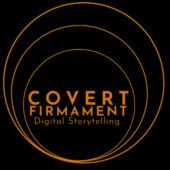Edinburgh Fringe 2022
The Chosen Haram
Sadiq Ali
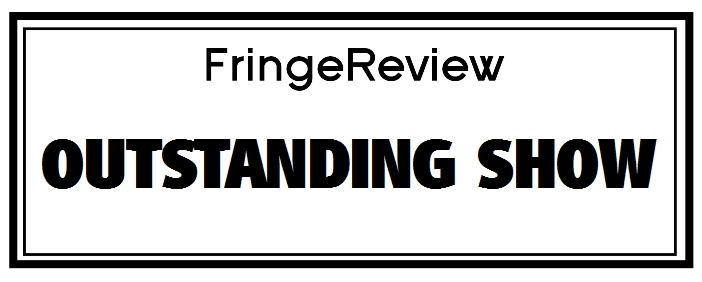
Genre: Circus, Dance and Movement Theatre, LGBT Theatre, Physical Theatre
Venue: Summerhall - Main Hall
Festival: Edinburgh Fringe
Low Down
A gripping, unconventional gay love story where a practising Muslim and a white gay party boy face the barriers of getting together, to explore love and sex the way they choose to, using a hugely original, stylish and affecting blend of circus, dance, music, comedy and storytelling without spoken words. Superbly creative !
Review
The Chosen Haram is transfixing and mesmerising from start to finish. It is rare that one witnesses true originality and creative artistry of this level in the theatre. It is perhaps not surprising that such a high standard has been achieved, as The Chosen Haram has been three years in the making, with Sadiq Ali (no relation) at the helm of the creating and the performance, joined in the show and matched in virtuosity by Alexander Duran Davins, who, it is hard to believe, only joined the project six weeks before it opened in Edinburgh, due to the loss of the original co-performer. Add to this the fact that Ali had a fractured toe the night I saw it, in a show that demands Chinese pole acrobatics and meticulously crafted symbolic dance movements, and you get a sense of the commitment and devotion that has created this important and highly original hour of theatre/circus/dance fusion.
The opening grabs your undivided attention, starts you puzzling, feeds you rich symbolism and subtext that forces you to use your knowledge and intelligence to make connections with other domains, to make sense of what is unfolding before you. The start finds both performers bound to the upright circus poles. Ali is wrapped head to toe in dark grey luggage wrap. He gradually breaks through it, with visceral ominous electronic music accompanying his emergence, hands pleading forward for help, as he struggles to free himself from the chrysalis that has kept him bound. A brilliantly evocative mirror of a practising Muslim gay man’s stifling reality in moving towards self-expression. As a gay man with Muslim heritage, the wordless opening spoke volumes. This fascination, unbroken concentration and admiration of their ever-spiralling creativity continues throughout the piece ; we get swept along as the story develops in wave after wave of ever-changing locations, music beds and scenarios. The two performers use every part of the stage, from the top of the poles, to disappearing behind the black drapes to reappear on the other side of the stage, to the front of the stage apron writhing in white polystyrene granules that variously symbolise drug use, semen, obstruction and camouflage.
Fusion is a word over-used in performance claims, but here the duo really do fuse circus (impressive vertical pole acrobatics worthy of professional gymnasts and circus performers), dance (that clearly communicates the plot, feelings and inner thoughts of both characters without being at all clumsy or simplistic), music (a score that runs throughout the show, a third performer/storyteller bringing, shock, regret, location and plot details, from gut-grabbing tension to the camp fun of Marilyn Monroe underscoring the sex scene) and visual storytelling that simply but profoundly tells us this cross-cultural boy-meets-boy tale, whilst portraying the turmoil both feel, morally and physically, when drug use gets the better of both of them. The choice of a wordless fusion of so many elements is absolutely right. There are many shows on the Fringe claiming to be ‘performance art’. They all need to see this show. Performance art without minutely crafted symbolism and subtext, carefully juxtaposing the different elements to create meaning, doubt, deliver comment and engender emotions, quickly becomes tedious. In The Chosen Haram, all of these essential elements have been perfectly judged to interact on all these levels, to take us below the surface of the moment – to portray emotions, thoughts, plot and artistry. For example, after the first time that the two men physically get together, the ever-swirling music, some surreal, some recognisable, morphs from gay party club music through dreamlike transitions into distorted but recognisable Islamic prayer music where Ali’s character dons a kufi (Muslim man’s prayer skull cap) and steps forward to face judgement (his own and Islam’s) for acting on his sexual desires, praying and self-admonishing; eloquent, emotionally complex, portraying his immiscible choices. This level of rich, true fusion of art forms is maintained throughout, and makes this unique piece truly remarkable.
The story sees our gay Muslim character struggle with and embrace his desire for men, and, without giving away the ending, we witness more than one haram (something forbidden or proscribed by Islamic law) that he chooses. We are left to wonder in which philosophy or lifestyle he is or might be better off and whether he can ever marry the two. No simplistic neatly tied up end to a (love) story. A gobsmackingly brilliant achievement.




